2025 Yamaha R9 – First Look

It’s finally here!
The wait is finally over! Yamaha has announced that, yes, an R9 is coming to the world, after years of speculation. Motorcycle.com, as well as basically every other motorcycle publication around the world, has written about what we think the bike is going to feature, and our own Dennis Chung revealed what we knew based on CARB filings and social media teasers, but now we know for sure what the R9 brings to the table.
Yamaha held an intimate gathering of the US motorcycle press to showcase the new R9 and explain more of the details behind it. As we know, with the R6 no longer available, Yamaha sportbike fans have been looking to fill the void between it and the R1 – and no, the R7 wasn’t it. And as far as numerical nomenclature goes in a manufacturer’s model lineup, there was a clear gap between the R7 and the R1. The obvious choice for what would fill that gap was even more obvious considering Yamaha’s own 890cc Triple was hiding in plain sight, but, until now, always clothed in MT-09 garb in various iterations.
Yamaha insists the R9 is not a replacement for the R6, since the R9 certainly has track capability in mind but does its best to consider street worthiness too. Despite what Yamaha says though, it’s hard not to consider the R9 at least the spiritual successor to the R6, if not a true replacement. It’s also not the replacement for the R1, which in some markets (not ours, thankfully, at least not yet), is getting phased out and moved to track-only status.
So, with brief context on where Yamaha sees the R9, let’s get into it and see what one of the most anticipated sportbikes of 2025 is all about.
The Looks
What better place to start than its appearance. One look at the R9 and you’re met with unmistakable Yamaha styling. The nose reveals a very similar shape to the R6, and even the R3 with its LED light strips. In the center is what used to be considered a ram-air intake on the R6. Instead there’s an R7-inspired headlight recessed in the cavity. Look under the headlights and you’ll find…
Winglets! De rigueur for sportbikes these days, the R9 comes so equipped and yes, they are functional. The fuel tank shape is reminiscent of the R1, while the tail section (which is a new design for the R9) looks inspired by the R6. Yamaha goes on to say the R9 is the most aerodynamic model it’s ever offered.
Ergonomically, the R9 strikes a balance between the track-focused R1 and the more streetable R7. The clip-on bars are below the triple tree without much, if any, sort of riser to place the bars themselves over the triple. This already gives you an indication of the sportiness of the R9 and the aggressiveness of its riding position in relation to some of today’s “next generation” sporty-bikes like the Suzuki GSX-8R, Triumph’s Daytona 660, Aprilia’s RS660.
However, in relation to its fellow Yamaha siblings, the R9’s ergonomic triangle places the bars at approximately the same position as the R1, while the pegs and seat are either lower and/or further forward. And let’s not forget the fact that the R9, like the MT-09, has adjustable footpeg placement should you want to move them one notch higher.
Chassis
It would be easy to assume the R9 is just an MT-09 with bodywork, but you’d be wrong. The frame itself might look visually similar to the MT-09, but it’s formed from a gravity casting to create the lightest aluminum frame ever offered on a Yamaha supersport model. It also is tuned to meet different flex characteristics compared to the MT-09.
KYB provides the suspension on the R9, with the SDF (Separate Damping Fork) offering not only full adjustability but also the ability to change both high- and low-speed compression damping. The shock is also fully adjustable and features a convenient external preload adjustment knob for easy access.
Engine
Usually the engine is higher on our list of talking points, as it’s the heart of any motorcycle, but in this case the 890cc Triple isn’t much changed from the one we love in the MT-09. The primary difference, according to Yamaha, is dedicated fuel mapping for the R9. And though this isn’t a change to the engine itself, the rear sprocket drops two teeth (from 45 to 43) for better top-end speed. In practice, this leaves us with an engine making a tick shy of 120 horses at the crank (106 hp at the wheel, the last time we had a MT-09 on the dyno), with torque figures the dearly departed R6 could only dream about (roughly 63 lb-ft at the wheel, again, the last time we had an MT-09 on the dyno). We’ve touted the streetability of the CP3 engine multiple times in our previous reviews of the MT-09 and its variants, and there’s no reason to believe the R9 will be any less accommodating. But now, with its taller gearing, the R9 should be a little ripper on track, too. All the better since that means we get to hear the inline-Triple sing.
Brakes
Yamaha has been the butt of so many brake jokes over the years because, somehow, its sport models have always suffered from wooden brakes. Big steps were taken with the MT-09 SP to combat this issue by outfitting it with Brembo Stylema calipers and steel-braided lines to go along with the Brembo master cylinder. Both the Stylemas, steel lines, and the master are back on the R9, but this time they are joined by 320mm discs (compared to 298mm on the MT-09). And to make sure we moto-reviewers are satisfied, Yamaha says the Stylema calipers are fitted with different, more aggressive brake pads – basically everything I’ve been asking for! ABS comes standard, but unfortunately, only the rear has the option to have ABS turned off.
Electronics
Being the sibling of the R1, which was one of the first sportbikes to come with an IMU, of course the R9 has a whole host of electronics – also dependent on an IMU and wheel speed sensors. Rider aids include a nine-mode Traction Control System (TCS), three-mode Slide Control System (SCS), three-mode Lift Control System (LIF) and a Brake Control System (BC). The rider can adjust the levels of intervention and each of these systems can also be turned off should you want the ultimate connection between man and machine.
Apart from the rider aids, you also have an autoblipper in both directions for seamless gearshifts, smartphone connectivity, and even cruise control(!) Toggling through the menus is easy with the joystick-centered switchgrip on the left bar, and everything is easily read through the 5-inch full-color TFT display with different themes to suit your tastes.
Price
Maybe the best part about the R9? It’s ultra-attractive price tag. At just $12,499, the R9 comes in at an extremely reasonable price tag, undercutting the likes of the Suzuki GSX-R750 ($13,149) and Triumph Street Triple 765 RS ($12,795), while barely costing more than the Aprilia RS660 ($11,549), and the aging Honda CBR600RR ($12,199).
The 2025 Yamaha YZF-R9 will hit dealership floors in March 2025 and be available in three colors: Team Yamaha Blue, Matte Raven Black, or Intensity White/Redline. We’re slated to ride the bikes the following month, and when we do, stay tuned for our First Ride Review right here on these pages. For now, rejoice at the fact the R9 is no longer a rumor and appreciate the fact that, at least for the time being, sportbikes are not dead.
2025 Yamaha YZF-R9 Specifications | |
|---|---|
Engine Type | Liquid Cooled, 4-Stroke, DOHC Inline-Three, 4 valves per cyl. |
Displacement | 890cc |
Bore x Stroke | 78.0 mm x 62.1 mm |
Compression Ratio | 11.5:1 |
Horsepower | n/a |
Torque | 69 lb-ft. at 7,000 rpm |
Starting system type | Electric |
Lubrication system | Wet sump |
Ignition | TCI(Transistor) |
Finald Rive | Chain |
Primary Reduction | 1.681 (79/47) |
Secondary Reduction | 2.688 (43/16) |
Clutch | Multi-plate wet clutch |
Transmission | Constant mesh 6-speed |
Frame type | Diamond |
Front Suspension | Coil spring / Hydraulic damper, 4.7 inches of travel |
Rear Suspension | Coil spring / Gas hydraulicdamper, 4.6 inches of travel |
Front Brake | Dual 320mm discs, Brembo Stylema radial-mount four-piston calipers |
Rear Brake | Single 220mm disc |
Front Wheel | 17M/C x MT3.50 |
Rear Wheel | 17M/C x MT5.50 |
Front Tire | 120/70ZR17M/C(58W) |
Rear Tire | 180/55ZR17M/C(73W) |
Rake / Trail | 22°35′ / 3.7 inches |
Wheelbase | 55.9 inches |
Become a Motorcycle.com insider. Get the latest motorcycle news first by subscribing to our newsletter here.

Troy's been riding motorcycles and writing about them since 2006, getting his start at Rider Magazine. From there, he moved to Sport Rider Magazine before finally landing at Motorcycle.com in 2011. A lifelong gearhead who didn't fully immerse himself in motorcycles until his teenage years, Troy's interests have always been in technology, performance, and going fast. Naturally, racing was the perfect avenue to combine all three. Troy has been racing nearly as long as he's been riding and has competed at the AMA national level. He's also won multiple club races throughout the country, culminating in a Utah Sport Bike Association championship in 2011. He has been invited as a guest instructor for the Yamaha Champions Riding School, and when he's not out riding, he's either wrenching on bikes or watching MotoGP.
More by Troy Siahaan







































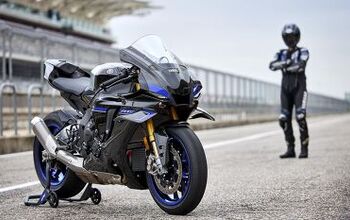

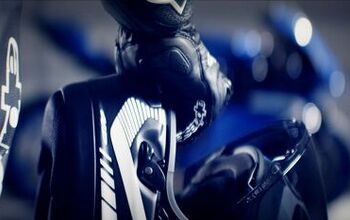
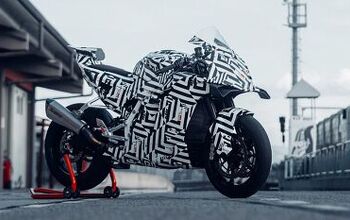






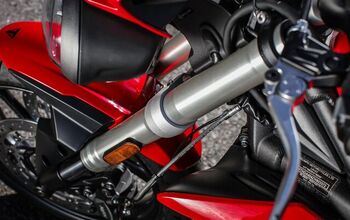




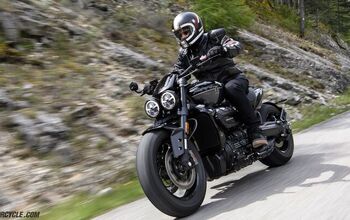

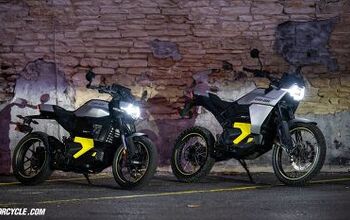
Comments
Join the conversation
Nice summary.
Though the R9 costs less than many competitors, including Triumph’s Street Triple 765 “RS” ($12,795), it still costs more than the lower “R” ($10,595) model, which I believe is the steal of the segment.